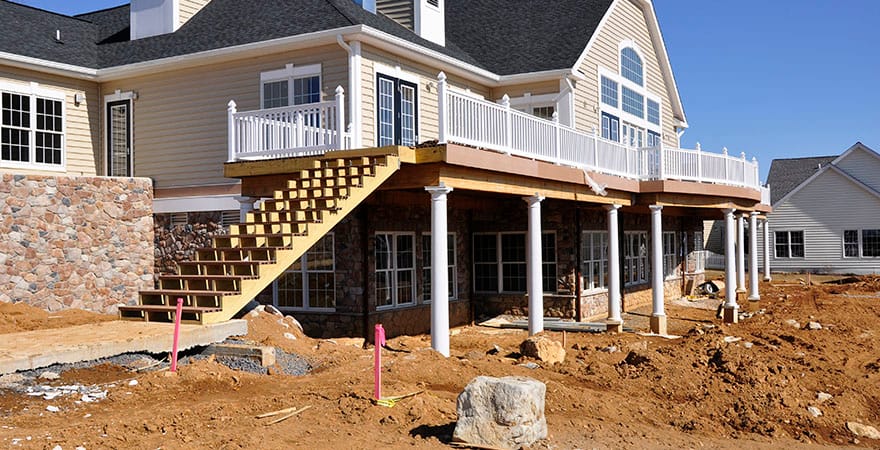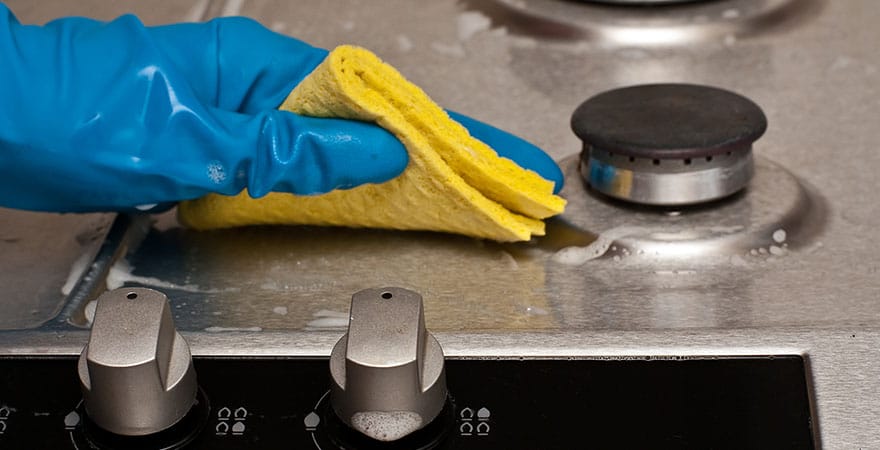
What Causes Concrete Discoloration And How To Fix It?
Home Improvement October 30, 2025 No Comments on What Causes Concrete Discoloration And How To Fix It? 5Concrete is the most popular construction material in the world. It is used to build both commercial and residential properties and is known for reliability, durability, and strength. Today, concrete is used for driveways and other areas that receive significant human traffic. For some, concrete is supposed to stand the test of time, while for others, it helps elevate the visual appeal. Regardless of the purpose, everyone likes their concrete to stay and look in good shape, but sometimes, discoloration becomes a headache. So, you should know these things before ordering concrete mix delivery to avoid this issue.
Causes of Concrete Discoloration
Inconsistent Materials
One of the most common reasons concrete tends to discolor is the suppliers or on-site mixer using inconsistent materials. It is usually the case that one batch of concrete is different in color than the next. This is why it is important for the supplier to practice consistency when preparing concrete.
There have been many incidents in the past and continue to be so, where the project experiences disparities in color. As a result, the structure itself appears visually off. But the problem on the supplier’s side is that it can be a bit difficult to achieve a uniform color.
The reason is that each batch of concrete comes with unique properties. It will take a lot of time for the supplier to check and go through each batch to make sure the color is uniform. This does not mean the supplier won’t check for it, but you should expect a bit of change.
While some reactions can be controlled during the manufacturing process, others are unexpected and give little to no space at all for the manufacturers to act or react. The best and only way to ensure the concrete achieves as close to uniformity as possible is by making sure the supplier conforms to the industrial standards.
From high-quality ingredients to utilizing the right techniques, inconsistency should be the least of the supplier’s worries.
Adding Water On The Job Site
Adding water on the job site is a common sight as it helps keep the concrete fresh. But the problem is that adding too much water can lead to discoloration. In most cases, minor additions won’t make much difference, but repeated additions can offset the color.
That said, it is important that the concrete should only be handled by an expert or someone who knows how to mix concrete to ensure every addition is properly measured and closely monitored.
Change In Color Of Cement
It is quite common for the cement sent to the ready-mix plant to change its color slightly based on how it was burned during production. This means, a change in the color of cement will also change the color of concrete.
This change is easily noticeable if the cement used for the mix is from different sources. Then again, the only way for the supplier to ensure the cement does not change color is by adhering to the industrial codes. Different manufacturers deploy varying techniques to save both time and money.
But, if the color uniformity is every client’s major concern and priority, the supplier should ensure the standards are being met.
Adding Calcium Chloride
You might have observed ready-mix suppliers adding calcium chloride to speed up the concrete’s setting time. That might be an option in some cases, but that does not leave without any side effects. The addition of calcium chloride makes the concrete take on a darker color. This becomes worse if the supplier continues to add other additives as well without measuring or keeping a check.
But if you choose a certified concrete supplier Gaithersburg who follows quality standards, they will make sure the addition of calcium chloride and other additives is strictly monitored. This way, the client won’t have a hard time accepting the batch either especially if they are concerned about color uniformity.
Replacements For Cement
Environmental conservationists have been arguing and forcing manufacturers to opt for some other alternatives to cement to protect the environment. While there is nothing wrong with the approach but the consequences cannot be controlled at times.
For instance, using recycled materials leaves the manufacturers with no choice or control when it comes to achieving a uniform color. If the suppliers are expected to do that, they will have to invest heavily in newer technologies, come up with innovative strategies, which not only take time but also a lot of money.
Not every supplier is ready to spend that much, especially if it’s a small or medium-scale supplier. Although there are some ways to achieve uniform color by using slag or fly ash, etc. but it can be difficult to keep an eye out for every batch.
Poor Quality Of Work
Sometimes, the problem does not lie with the cement or the additives used. Even if the quantity and quality is perfect, poor quality of work can also cause cement discoloration. For instance, the weather has a direct impact on the end result.
The contractors should keep a check on the weather forecast before pouring concrete. Water should be added to the subgrade before the top of the dry subgrade is layered with concrete. If the concrete’s dry finishing is done and the surface still has bleed water, it will cause a huge color difference.
At the same time, hot weather removes moisture from the concrete at a fast pace. This is why, using additives, wind breakers etc., might be a good option to prevent color deformity later on. This tips should be followed in every project whether it’s pouring concrete foundation, installing an in-ground pool, or any other project.
How To Treat Discolored Concrete?
There are several ways to treat discolored concrete. It depends on the intensity and type of discoloration. If the discoloration happens to be light, you can cleanse the hardened surface with hot water and use a fine brush to scrub the surface to even out the color.
But if the discoloration tends to be severe, you will need to repeat the steps multiple times before the uniformity can be achieved. Once the concrete is dry and the stains have faded, you can apply a thin coat of concrete sealer to preserve and maintain the color.
Furthermore, you can also use muriatic acid, but the mixture should be mild. 1% to 3% muriatic acid is normally used for severe discoloration. Using a high concentration or mixture of this acid can also leave stains. This is why using an appropriate proportion is crucial to ensuring everything goes right.
Conclusion
The treatment and prevention of concrete discoloration lie in utilizing the right techniques, additives, and keeping a close eye on quality checks. Since most of the issues are related to disproportionate quantities and the way suppliers mix or produce concrete, such problems can be avoided if your order ready mix concrete delivery Bethesda by after carefully a reputable supplier. Moreover, proper concreting techniques also critical in avoiding concrete discoloration.








Leave a comment